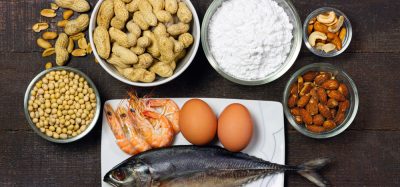PFAS contamination found in processed meats, teas and packaging
- Like
- Digg
- Del
- Tumblr
- VKontakte
- Buffer
- Love This
- Odnoklassniki
- Meneame
- Blogger
- Amazon
- Yahoo Mail
- Gmail
- AOL
- Newsvine
- HackerNews
- Evernote
- MySpace
- Mail.ru
- Viadeo
- Line
- Comments
- Yummly
- SMS
- Viber
- Telegram
- Subscribe
- Skype
- Facebook Messenger
- Kakao
- LiveJournal
- Yammer
- Edgar
- Fintel
- Mix
- Instapaper
- Copy Link
Posted: 7 February 2024 | Grace Galler | No comments yet
A group of scientists have carried out research into the links between PFAS and diet. Find out more about the study here…


Longitudinal studies have been completed by researchers at the Keck School of Medicine of USC, unearthing PFAS contamination with processed meats, teas and food packaging.
The study was partially funded by the National Institutes of Health and sought to discovers food and beverage products linked to per- and polyfluoroalkyl substances (PFAS).
New Food has previously reported on the potential ricks of PFAS to human health. In fact, in an article written for New Food, Sara Stead shared that “food can become contaminated through the soil and water used to grow the food, via the concentration of these substances in animals, and also through food packaging or processing equipment that contains PFAS”.
Sometimes referred to as “forever chemicals”, PFAS is typically used in fabrics, furniture and other household items but recent tests have linked them to livestock, drinking water and food packaging.
The new study carried out by researchers at the Keck School of Medicine of USC, was carried out by analysing two multiethnic groups of young adults, one a nationally representative sample and one primarily Hispanic. Results revealed that greater consumption of tea, processed meats and food prepared outside the home was associated with increased levels of PFAS in the body over time.
“To our knowledge, this is the first study to examine how dietary factors are associated with changes in PFAS over time. Looking at multiple time points gives us an idea of how changing people’s diets might actually impact PFAS levels,” said Jesse A. Goodrich, PhD, Assistant Professor of population and public health sciences at the Keck School of Medicine and the study’s Senior Author.
The results of the study were published in the journal Environment International, and also point to the importance of testing and monitoring various food and beverage products for contamination with PFAS.
“We’re starting to see that even foods that are metabolically quite healthy can be contaminated with PFAS. These findings highlight the need to look at what constitutes ‘healthy’ food in a different way,” said Hailey Hampson, a Doctoral Student in the Keck School of Medicine’s Division of Environmental Health and the study’s Lead Author.
To test participants for levels of various PFAS, those involved in the study gave blood samples, with the CHS group being tested twice (once at around age 20 and once at around age 24), meanwhile the NHANES group was tested once at around the age of 19.
In the CHS group, participants who reported higher tea consumption during the first visit had higher levels of PFAS at the follow-up visit (one additional serving of tea was linked to 24.8 percent higher perfluoro- hexanesulphonic acid (PFHxS), 16.17 percent higher perfluoroheptanesulfonic acid (PFHpS) and 12.6 percent higher perfluorononanoic acid (PFNA)). Those who reported more pork intake on their initial visit also had higher levels of PFAS at follow-up (one additional serving of pork was associated with 13.4 percent higher perfluorooctanoic acid (PFOA)).
However, the study revealed that eating food prepared at home “had the opposite effect”, as for every 200-gram increase in home-prepared food, perfluorooctanesulfonic acid (PFOS) levels were found to be 0.9 percent lower at baseline and 1.6 percent lower at follow-up.
“These findings are important because they not only reveal the presence of traditional PFAS, such as PFOA and PFOS, but also more recently developed PFAS, including PFHxS and PFHpS,” explained the researchers, before continuing “Participants who consumed more tea, hot dogs and processed meats had higher PFAS levels; eating more home-prepared food was linked to lower PFAS levels.”
“This really helped us determine that the associations we are seeing aren’t just true for one geographical location, but are actually applicable to people across the country,” added Goodrich.
According to the study authors, by observing links between PFAS levels and food production change over time, there is a suggestion that dietary changes could impact PFAS levels in the body. In addition, they believe the findings suggest that the public monitoring of certain products, such as beverages, “could help identify and eliminate sources of contamination”.
However, the scientists highlighted that food packing is “more ubiquitous and may require a bolder approach”. Back in 2023, California’s Attorney General issued an advisory letter requiring manufacturers of food packaging and paper straws to disclose PFAS levels in their products, something Goodrich believes is a “really good step in the right direction”.
Going forward, Goodrich, Hampson and the rest of the research team are conducting research on the extent of PFAS contamination in popular tea brands, as well as a follow-up study on diet and PFAS levels in a multi-ethnic group of participants.
Stay updated with New Food in the coming months to find out more about the potential impacts of PFAS in the food sector.
Related topics
Food Safety, Health & Nutrition, Quality analysis & quality control (QA/QC), Research & development, The consumer








